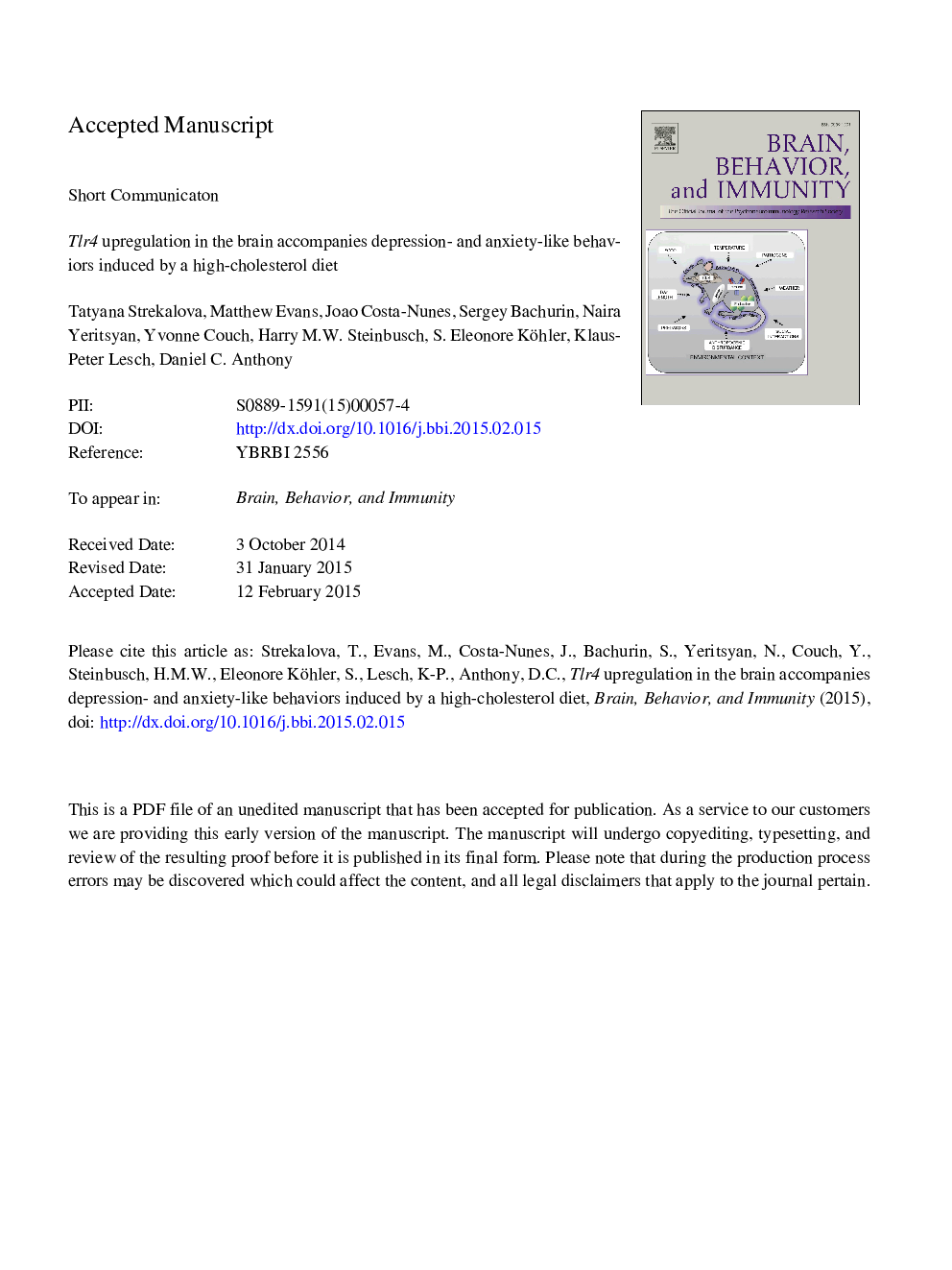| Article ID | Journal | Published Year | Pages | File Type |
|---|---|---|---|---|
| 7280883 | Brain, Behavior, and Immunity | 2015 | 21 Pages |
Abstract
An association between metabolic abnormalities, hypercholesterolemia and affective disorders is now well recognized. Less well understood are the molecular mechanisms, both in brain and in the periphery, that underpin this phenomenon. In addition to hepatic lipid accumulation and inflammation, C57BL/6J mice fed a high-cholesterol diet (0.2%) to induce non-alcoholic fatty liver disease (NAFLD), exhibited behavioral despair, anxiogenic changes, and hyperlocomotion under bright light. These abnormalities were accompanied by increased expression of transcript and protein for Toll-like receptor 4, a pathogen-associated molecular pattern (PAMP) receptor, in the prefrontal cortex and the liver. The behavioral changes and Tlr4 expression were reversed ten days after discontinuation of the high-cholesterol diet. Remarkably, the dietary fat content and body mass of experimental mice were unchanged, suggesting a specific role for cholesterol in the molecular and behavioral changes. Expression of Sert and Cox1 were unaltered. Together, our study has demonstrated for the first time that high consumption of cholesterol results in depression- and anxiety-like changes in C57BL/6J mice and that these changes are unexpectedly associated with the increased expression of TLR4, which suggests that TLR4 may have a distinct role in the CNS unrelated to pathogen recognition.
Keywords
Related Topics
Life Sciences
Immunology and Microbiology
Immunology
Authors
Tatyana Strekalova, Matthew Evans, Joao Costa-Nunes, Sergey Bachurin, Naira Yeritsyan, Yvonne Couch, Harry M.W. Steinbusch, S. Eleonore Köhler, Klaus-Peter Lesch, Daniel C. Anthony,
